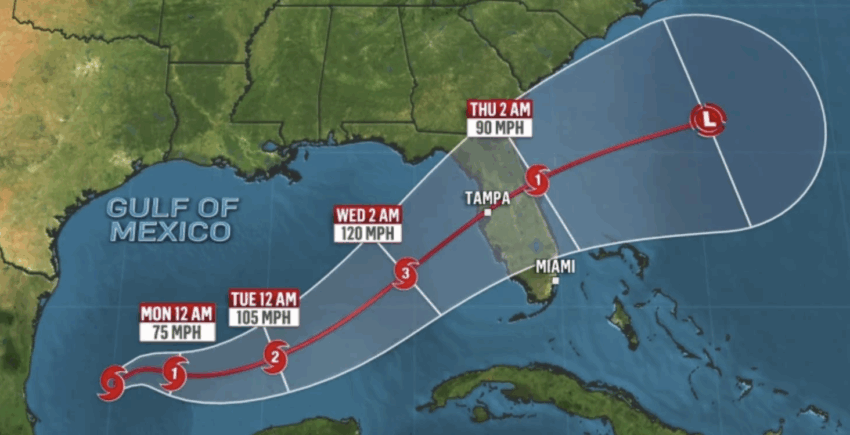Rick Patrick
rick@greenepublishing.com
The Big Bend region of Florida has seen more than its fair share of hurricanes in recent years. The impacts of Hurricanes Idalia, Debby and Helene will be seen and felt for many years to come.
Hurricane Idalia, which hit the Taylor County coastline in late August of 2023, is blamed for a total of 12 fatalities in the United States. According to the National Oceanic and Atmospheric Administration (NOAA) National Centers for Environmental Information, “the estimated damage from Idalia is $3.6 billion, most of which occurred in Florida’s Big Bend region, with a 90 percent confidence interval of damage ranging from $2.6 to $4.2 billion. The majority of the damage affected Florida’s agriculture industry in the Big Bend region and northern portions of the state. In particular, strong winds caused damage to buildings, trees, peanut and cotton crops, infrastructure, irrigation rigs, aquaculture and livestock.”
Less than a year later, Hurricane Debby struck Florida’s gulf coast near Steinhatchee as a Category One hurricane on Aug. 5, 2024. Although the wind damage was not as severe as the earlier Hurricane Idalia, flooding became a major problem with Debby. According to NOAA, “...rainfall amounts of eight to 12 inches across the heaviest hit regions caused widespread flooding in southeast Madison and eastern Lafayette Counties. Areal flooding continued for at least two weeks post landfall across southeast Madison County as high ground water levels and heavy rainfall totals put pressure on the ground water system.”
The Big Bend’s hurricane woes continued later in 2024, when Hurricane Helene smashed into the Taylor County coastline at almost the same spot that Hurricane Idalia hit the previous year. The category four storm went on record as the deadliest storm to hit the United States since Hurricane Katrina devastated the Mississippi and Louisiana gulf coast in 2005. According to NOAA, “Helene is responsible for at least 250 fatalities in the United States (including at least 176 direct deaths).” Most of those fatalities occurred in North Carolina, where 86 perished as a result of the storm, with the vast majority of those deaths occurring due to freshwater flooding. In Florida, 18 deaths are attributed to Helene, with four deaths from wind and 14 to storm surge. In addition to the loss of life, Helene caused an estimated $78.7 billion in damages in the United States. It is estimated that over 16 million people were left in the dark due to power outages from Helene between Sept. 26 and Sept. 28.
It is anticipated that the 2025 hurricane season, which begins on Sunday, June 1, and continues through the end of November, will be another active season. The time is now to make preparation for you and your family’s safety. Have a plan and don’t wait until the last minute to put your plan into action.

